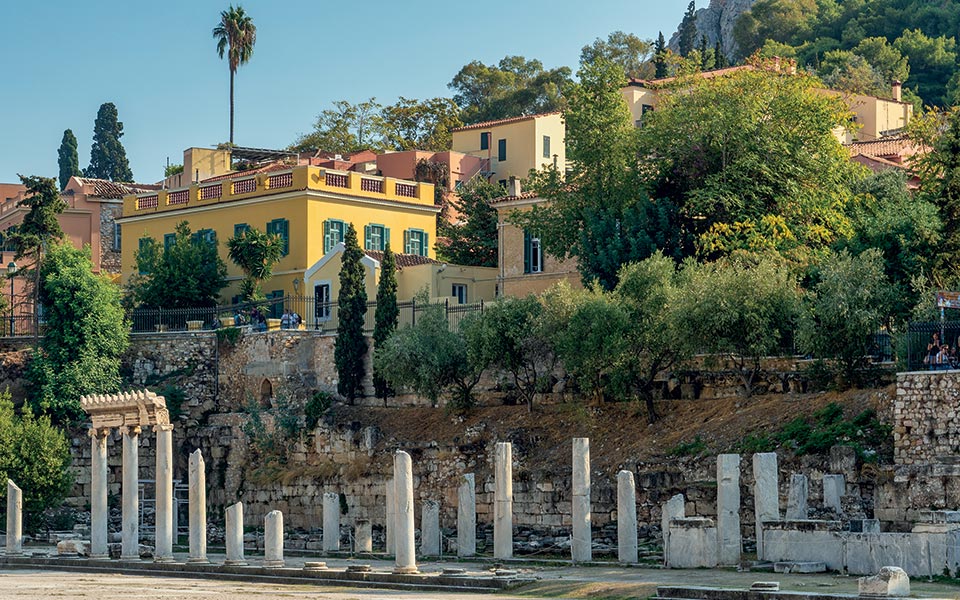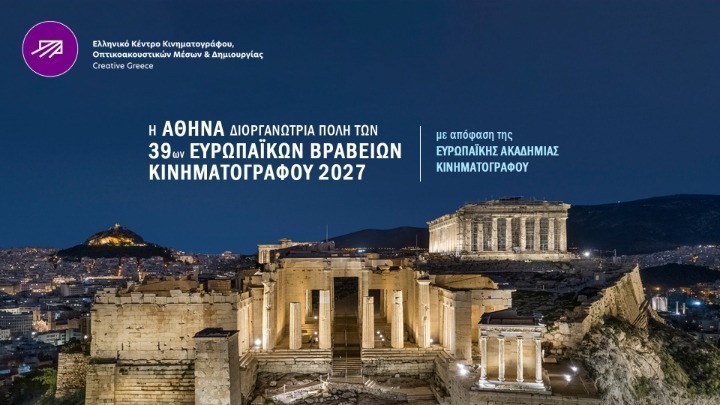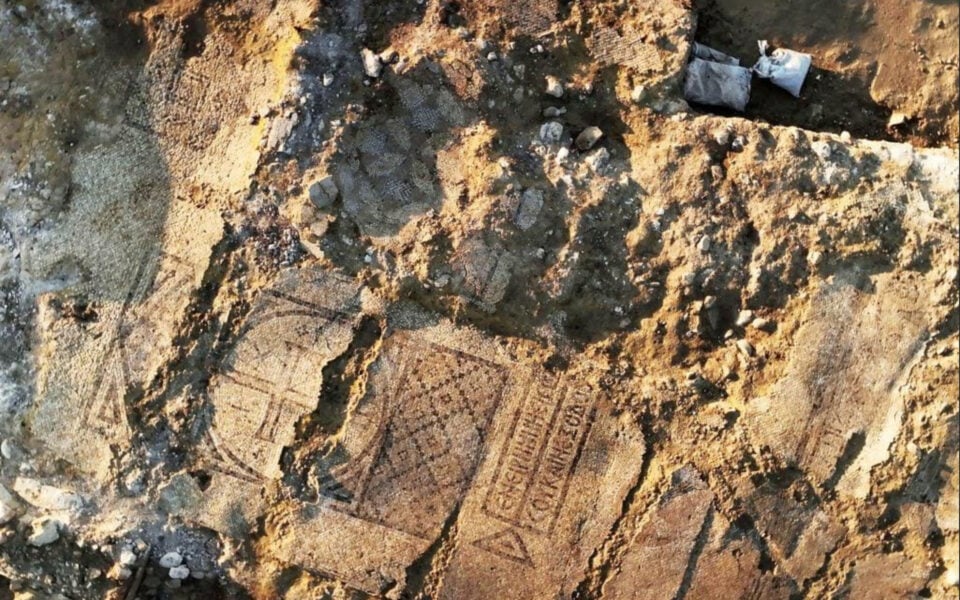Exploring the Roman Agora at Athens: A visitor’s guide


Nestled in the historic heart of Athens, the Roman Agora is an often-overlooked gem, where ancient cultures and architecture meet in a lively urban setting.
In the heart of Athens, nestled within the vibrant Plaka district, lies a site that has borne witness to the ebb and flow of empires—the Roman Agora. Distinct from its more famous neighbor, the Ancient Agora, this historic marketplace is nevertheless a testament to Athens’ richly layered history, where Greek, Roman, Byzantine, and Ottoman influences converge.
Construction of the Roman Agora began in the late 1st century BC, initiated by the Chief Magistrate Eucles of Marathon and funded by the emperor Augustus (63 BC-14 AD). This civic project fulfilled a promise made by Julius Caesar (100-44 BC) to the city of Athens in 51 BC, as an expansion of the existing commercial hub. Located on the north side of the hill of Acropolis, immediately to the east of the Ancient Agora, this new marketplace catered to the needs of a growing Athenian population, symbolizing the city’s evolution under Roman rule.


The Gate of Athena Archegetis
Our journey begins at the western entrance, where the imposing Gate of Athena Archegetis (“Athena the Leader”) greets you. Constructed in 11 BC, this monumental gateway, with its four colossal Doric columns of Pentelic marble, resembles the façade of a grand temple. Dedicated to Athena, the city’s patron goddess, it symbolizes the intertwining of Roman power and Greek tradition.
As you pass through the gate, take a moment to look up and admire the inscriptions carved into the marble entablature, located above the columns. If you can read Classical Greek, you might decipher the dedication that offers a glimpse into the history and people who first walked these steps over two thousand years ago:
O ΔΗΜOΣ ΑΠO ΤΩΝ ΔOΘΕΙΣΩΝ ΔΩΡΕΩΝ ΥΠO ΓΑΙOΥ ΙOΥΛΙOΥ ΚΑΙΣΑΡOΣ ΘΕOΥ/ ΚΑΙ ΑΥΤOΚΡΑΤOΡOΣ ΘΕOΥ ΥΙOΥ ΣΕΒΑΣΤOΥ/ ΑΘΗΝΑ ΑΡΧΗΓΕΤΙΔΙ ΣΤΡΑΤΗΓOΥΝΤOΣ ΕΠΙ ΤOΥΣ OΠΛΙΤΑΣ ΕΥΚΛΕOΥΣ ΜΑΡΑΘΩΝΙOΥ/ ΤOΥ ΚΑΙ ΔΙΑΔΕΞΑΜΕΝOΥ ΤΗΝ ΕΠΙΜΕΛΕΙΑΝ ΥΠΕΡ ΤOΥ ΠΑΤΡOΣ ΗΡΩΔOΥ ΤOΥ ΚΑΙ ΠΡΕΣΒΕΥΣΑΝΤOΣ/ ΕΠΙ ΑΡΧOΝΤOΣ ΝΙΚΙOΥ ΤOΥ ΣΑΡΑΠΙΩΝOΣ ΑΘΜOΝΕΩΣ
“The People of Athens, from the donations offered by Gaius Julius Caesar the God / And the Revered Emperor, son of God / To Athena Archegetis, on behalf of the soldiers of Eucles of Marathon / Who curated it on behalf of his father Herod and who was also an ambassador / Under the archon Nicias, son of Sarapion, from the demos of Athmonon.”
This inscription reflects the civic pride of the Athenians and their reverence for Athena—a sentiment deeply embedded in the city’s identity. As you step through the gateway, imagine the bustling activity that would have greeted you in ancient times: merchants hawking their wares, citizens debating politics, and scholars exchanging ideas.


The Tower of the Winds
Continuing your exploration to the other end of colonnade, you’ll arrive at one of the most fascinating and enigmatic ancient structures in all of Athens—the Tower of the Winds, otherwise known as the Horologion of Andronikos. This octagonal marble tower, built by Macedonian architect and astronomer Andronicus of Kyrrhos sometime between the end of the 2nd century and 1st century BC, was a technological marvel of its time. Imagine a structure that served as a sundial, a water clock, and a weathervane all in one—this is exactly what the Tower of the Winds was.
Each side of the tower is adorned with reliefs depicting the eight winds, personified as gods blowing over the city – Boreas (N), Kaikias (NE), Apeliotes (E), Eurus (SE), Notus (S), Livas (SW), Zephyrus (W), and Skiron (NW). These reliefs were integral to the tower’s function as a weathervane. In antiquity, a bronze statue of a Triton topped the tower, with a rod indicating the wind’s direction.
Inside the tower, time was measured by a sophisticated water clock, fed by a stream from the Acropolis. The floor still bears traces of the channels and holes that once held the clock’s mechanism, a reminder of the ingenuity of the ancient Greeks. Standing here, you can almost hear the trickle of water and the murmur of ancient Athenians consulting the tower to determine the time or the weather—a central feature of daily life in the Agora, especially in relation to the comings and goings of merchant ships at the port of Piraeus.


The tower’s significance extended beyond the Roman period. During the Ottoman era, it served as a “tekke,” a gathering place where men would meet to smoke water pipes and engage in conversation. In the 18th century, it became a local meeting point for the Sufi fraternity of the Mevlevi Order, known for their “whirling dervishes.” The tower’s enduring appeal even inspired European artists and architects, captivated by its elegant design and historical resonance. Today, it is considered the oldest meteorological station in the world.


The Fethiye Mosque
As you continue to the northern side of the Agora, you’ll encounter another layer of Athens’ complex history – the Fethiye Mosque, or the “Mosque of the Conquest.” Built in the late 1660s AD as a Sunni mosque, it stands on the site of a former Christian basilica, which was converted into a mosque in 1456 to honor the visit of Sultan Mehmed the Conqueror to Athens. This structure reflects the city’s diverse religious heritage. Later, during the Venetian occupation, the mosque was converted into a Catholic church. Following the Greek War of Independence, it served various purposes, including as a school.
Today, the mosque is used for storage, but plans by the Hellenic Ministry of Culture aim to restore it as a cultural center or museum. Its simple yet historic architecture offers a quiet reminder of the city’s Ottoman past (mid-15th century to 1821) – a period that is often overshadowed by its ancient and classical heritage. As you stand before the mosque, consider the layers of history that have shaped this city, each era leaving its mark on the landscape.
Hidden treasures
Beyond these major landmarks, the Roman Agora is filled with smaller, yet equally fascinating, remnants of ancient life. The site includes the remains of various shops, storerooms, and even public toilets – known as “vespasianae” (note the benches with holes around the walls and the sewage pipe beneath). These may seem mundane today, but they offer a glimpse into the daily life of ancient Athenians.
On the southern side of the Agora, you’ll find the remnants of a “krene” (fountain-house) and three small edifices that probably served as the offices of commercial authorities like “agoranomoi” or “metronomoi” (market officials and administrators).
One of the most intriguing aspects of the Roman Agora is that it was only fully uncovered in the 19th and 20th centuries. For centuries, the site lay buried beneath layers of houses from the Byzantine and Ottoman periods. The excavation, which began in 1837 under the auspices of the Greek Archaeological Society and continued into the 20th century, not only revealed the ancient marketplace but also highlighted the loss of more recent historical structures.
As you wander through the Agora, take note of the different architectural styles that coexist here – Doric, Ionic, and Roman. This blend of influences reflects Athens’ status as a cultural crossroads, where traditions from different eras and regions converged.


Practical information
Getting There: The Roman Agora is conveniently located near several key landmarks in Athens. If you’re traveling by metro, the closest stations are Monastiraki (Line 1) and Acropolis (Line 2). Both are a short walk from the site, making it easy to include the Roman Agora in your exploration of central Athens.
Opening Hours and Admission Fees: The Roman Agora is open year-round, with hours varying seasonally. From April 1st to August 31st, it operates from 8:00 to 20:00, and from September 1st to March 31st, it stays open until 15:00 pm. Click here for more information about opening times in September and October.
Admission costs €8, with reduced fees available for certain groups, including students and seniors. Children under 18 and EU students enjoy free entry. Consider purchasing the combined ticket if you plan to visit multiple archaeological sites, including the Acropolis, as it offers access to several key locations over four days.


Insider tips
Explore Early or Late: To avoid the midday crowds, visit the Roman Agora early in the morning or later in the afternoon. This not only allows you to enjoy the site’s tranquility but also to experience the historical ambiance without distraction.
Combine Visits: The Roman Agora is a short walk from other significant sites, such as the Ancient Agora, Hadian’s Library, and the Acropolis. A combined ticket not only saves money but also enriches your understanding of Athens’ ancient landscape. For more information on tickets, click here.
Comfortable Footwear: The terrain within the Agora can be uneven, so sturdy, comfortable shoes are recommended.
Stay Hydrated: Especially during the summer months, carry water with you, as the site offers limited shade and amenities.
This article appeared in Greece Is (www.greece-is.com), a Kathimerini publishing initiative.




